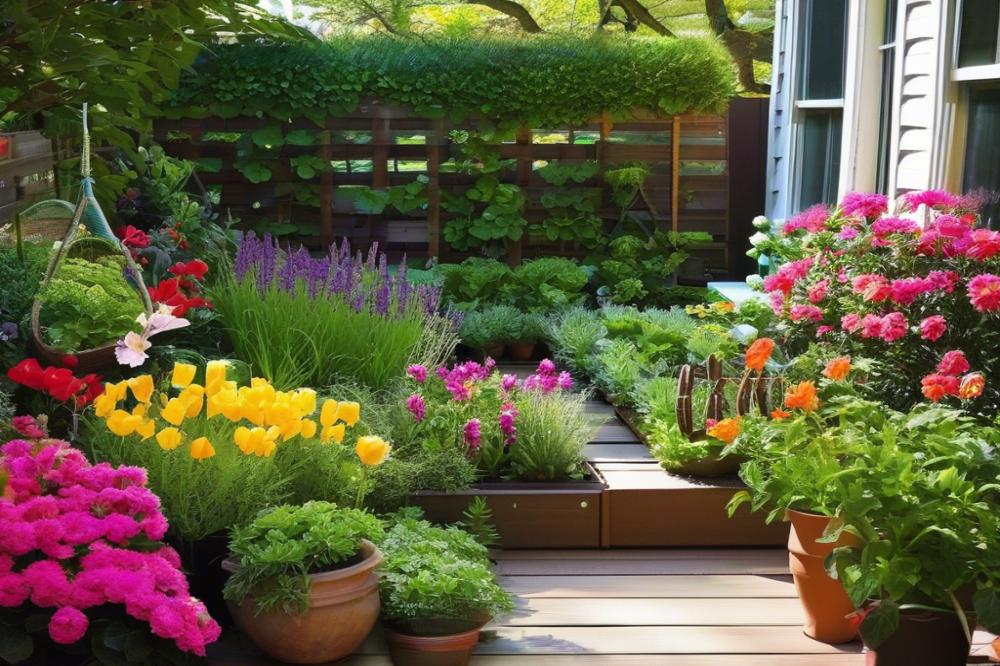Overview of the Benefits of a year-round vegetable garden
Imagine having fresh vegetables available every month of the year. A year-round vegetable garden makes this a reality. Growing your own produce offers a sense of accomplishment. You also enjoy fresher, tastier meals. From hearty winter greens to sweet summer tomatoes, the options are abundant. This kind of gardening reduces grocery bills, too. Each season brings different harvests and flavors to your table.
Importance of Planning and Preparation
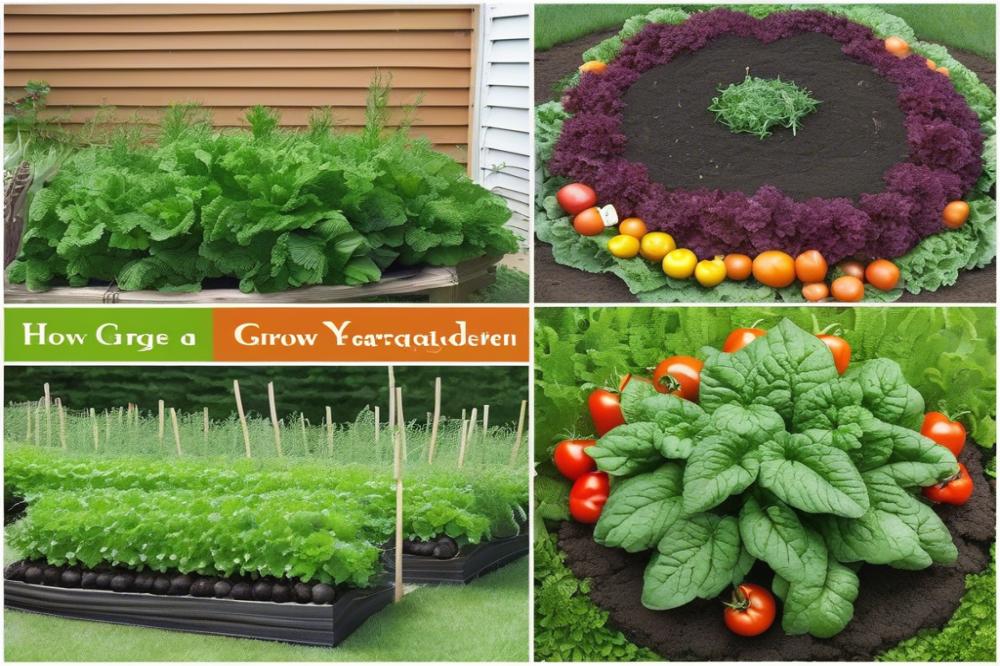

Planning is the foundation of successful vegetable gardening. Knowing what to plant and when makes all the difference. Layout your garden properly to maximize space and sunlight. Raised beds help improve drainage and soil health, giving your plants a strong start. Consider using heirloom seeds for unique varieties that many supermarkets don’t offer. Planning ahead allows you to take advantage of seasonal planting. Mixing crops and using methods like companion planting creates a diverse garden environment.
Highlight seasonal planting and Soil Health
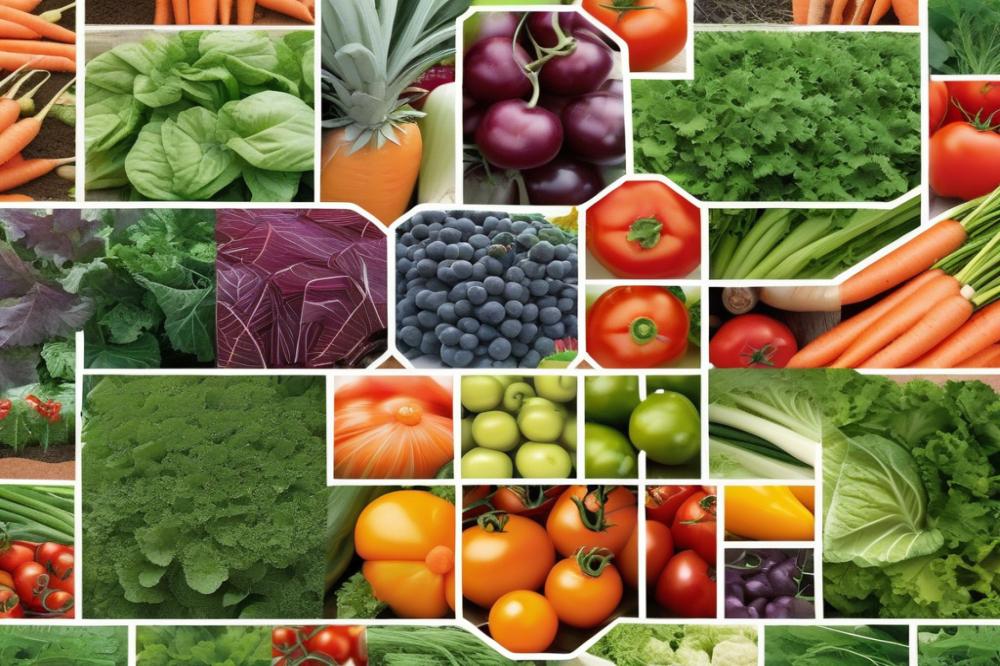

Growing in harmony with the seasons enhances your garden’s success. Winter gardening is not just possible; it can be a rewarding experience. perennial vegetables, like asparagus, offer reliable harvests with minimal effort. Crop rotation helps keep soil healthy and prevents plant diseases. Strong soil is key to growing vibrant vegetables. Regularly testing and amending soil boosts nutrients, ensuring your plants thrive. With a little knowledge and care, each season will bring its own gardening rewards.
Understanding the Basics of a Year-Round Vegetable Garden
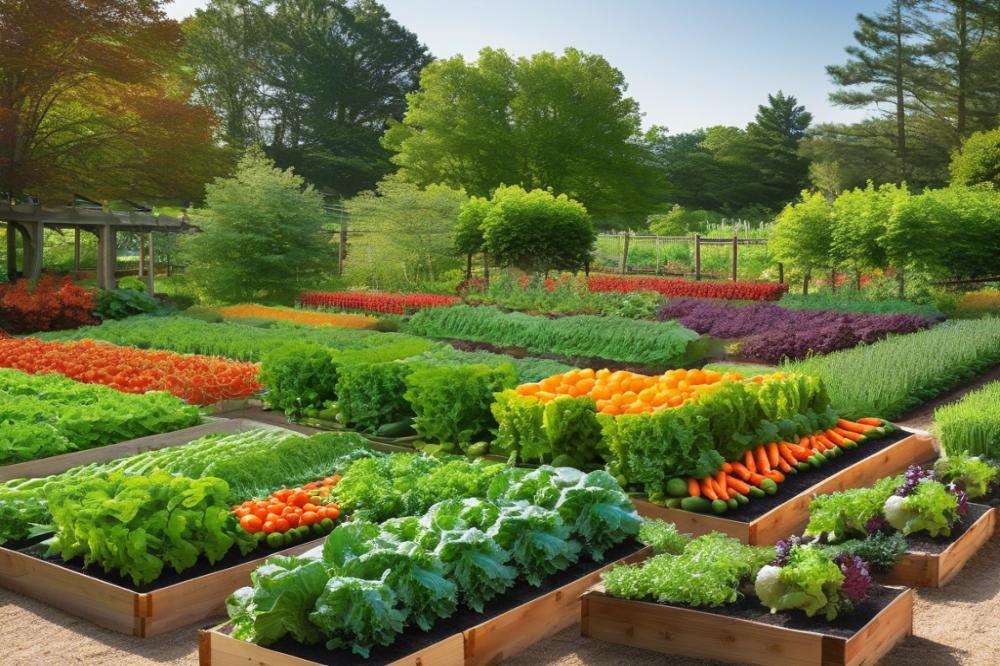

A year-round vegetable garden allows you to grow fresh produce regardless of the season. This approach maximizes your harvest and minimizes waste. The success of such a garden relies heavily on understanding your local climate and region. Different locations experience varying temperatures and rainfall patterns. These factors significantly influence which plants will thrive throughout the year.
When planning, consider the specific vegetables that suit each season. Certain crops are hardy and resistant to cold, while others prefer warmer temperatures. For instance, leafy greens like kale and spinach flourish in cooler months. They are perfect for winter gardening. On the other hand, tomatoes and peppers need the warmth of summer to truly succeed.
Seasonal planting also plays a critical role in your garden’s success. Carefully timed sowing allows for a continuous harvest. Crop rotation can help maintain soil health. It prevents nutrient depletion and reduces the risk of pests and diseases. Using raised beds can provide better drainage and warmer soil, particularly for spring planting.
Companion planting can enhance growth and deter pests naturally. Some plants boost the health of others when grown together. For example, marigolds can repel harmful insects that target vegetables. Incorporating heirloom seeds can also add diversity to your garden. These seeds offer unique flavors and can be more resilient in certain conditions.
Organic gardening techniques promote sustainability. They lead to healthier plants and better-tasting vegetables. Good garden planning is vital for success. Plot out your garden beds in advance to maximize space. This ensures you are making the most of your resources all year long.
Finally, don’t forget to assess your growing conditions. The right amount of sunlight, water, and nutrients will set your garden up for victory. Each season offers its challenges and opportunities. However, with the right strategies, your year-round vegetable garden can thrive effortlessly. Dive into the rhythm of nature, and watch your garden flourish!
Garden Planning for Year-Round Cultivation
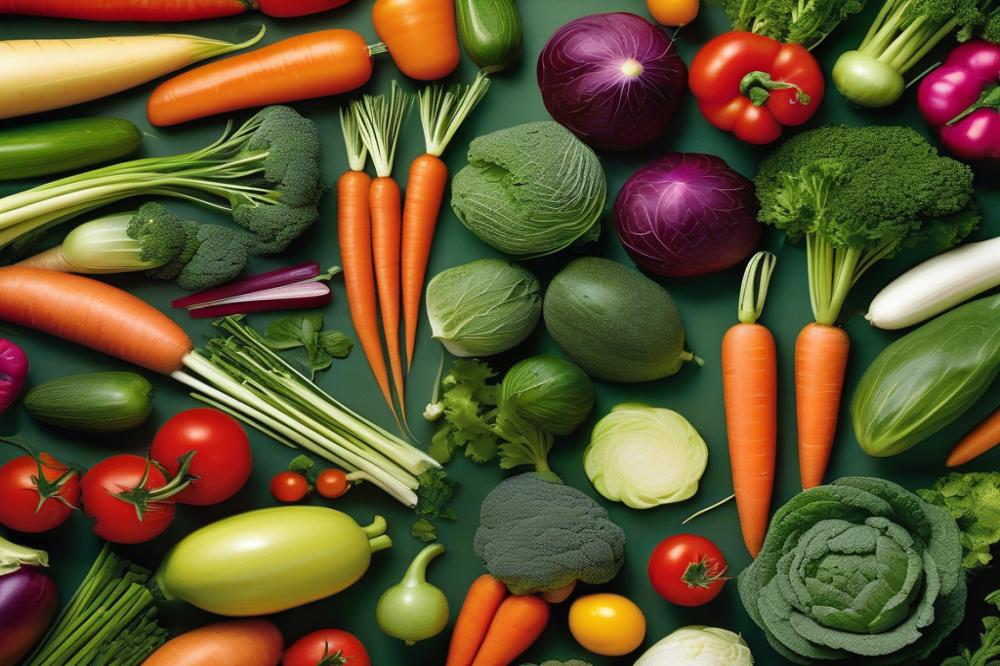

Starting a vegetable garden isn’t just about planting seeds. Garden planning is key for success. A great first step is creating a planting calendar for seasonal planting. This helps you know what to sow during different times of the year. By tracking your planting and harvest dates, you maximize your garden’s productivity. Remember, each season offers its own choices, whether it’s cold weather crops or summer favorites.
Crop rotation plays an important role in maintaining soil health. This practice involves changing the type of crops grown in a specific area each year. It helps prevent pests and diseases from becoming a problem. Additionally, rotating crops can replenish nutrients in the soil while allowing plants to thrive. Consider planning your rotational scheme around the needs of plants. Some soil may benefit from legumes, which fix nitrogen.
Choosing Raised Beds and Layouts
Selecting the right layout can make gardening easier and more efficient. Raised beds are excellent for a year-round vegetable garden. They provide better drainage, warmth, and accessibility. Plus, they help keep pests at bay. Ensure you build your beds in areas with good sunlight. A layout that aligns with the sun will give your plants the best chance to grow strong.
Companion planting is another strategy to enhance your garden. This means placing plants together that benefit each other, such as tomatoes and basil. These combinations can improve growth and flavor naturally. Consider heirloom seeds for unique varieties. They often have better taste and are more resilient.
Winter gardening might seem challenging, but it can be quite rewarding. With careful selection of cold-hardy vegetables, you can keep fresh produce available even in winter. Covering your beds with row covers or cold frames can provide that extra layer of protection. Adapting your strategies to include these techniques can yield delicious results.
So, whether you’re a newbie or a seasoned gardener, effective garden planning makes a difference. It creates a sustainable and productive gardening experience. Embracing these tips can elevate your vegetable gardening journey. You’ll reap the rewards of your hard work all year long.
Winter Gardening Techniques
Gardening in winter comes with its own set of challenges. Frost, for example, can damage tender plants quickly. Many gardeners worry about how to keep their crops alive during the cold months. However, with the right methods, you can grow vegetables even when the temperatures drop.
Understanding the Challenges of Winter Gardening
Low light conditions make it difficult for plants to thrive. Days are shorter and the sun is often hidden behind clouds. Moreover, even hardy crops can struggle to survive freezing temperatures. Soil health is crucial here; maintaining nutrients in frost can be tough. If you prep your garden well, you can fight off these obstacles!
Utilizing Cold Frames and Hoop Houses
Cold frames are an excellent tool for winter gardening. They trap heat and create a mini-greenhouse effect. Place them over your raised beds to give your plants extra warmth. Hoop houses are another way to extend your growing season. These structures are made of hoops covered with plastic, helping protect crops from harsh weather. Using these techniques allows for seasonal planting in winter.
Choosing Hardy Crops and perennial vegetables
Opting for the right plants makes all the difference. Some vegetables like kale, carrots, and Brussels sprouts are known for their cold tolerance. Heirloom seeds offer unique options that thrive in cooler temperatures. Moreover, don’t overlook perennial vegetables such as asparagus or rhubarb that return year after year. Companion planting can also work wonders during winter, helping toughen plants against cold. With smart planning, you can keep your winter garden lively.
Companion Planting and Its Benefits
Companion planting plays an important role in vegetable gardening. This technique involves pairing specific plants together to promote growth and health. The right combinations can offer benefits like pest control, improved soil health, and better crop yields. Think of it as nature’s team strategy for your garden.
Many gardeners practice seasonal planting and crop rotation to keep their gardens productive. With companion planting, you enhance this process. For example, planting marigolds alongside tomatoes can help keep harmful insects away. These vibrant flowers attract beneficial bugs that protect your crops.
Higher crop yields are another significant advantage of pairing compatible plants. Beans, for instance, fix nitrogen in the soil, making it richer. When you plant them next to corn, they provide support while improving growth conditions. This synergy increases productivity in raised beds.
The combination of plants doesn’t just focus on pest control. It also aids in the balance of nutrients in the soil. Various plants have different nutrient needs and roots that interact in beneficial ways. For instance, deep-rooted plants like carrots can help break up compacted soil, making it easier for shallow-rooted plants to thrive.
When planning your garden, consider using heirloom seeds. These seeds offer a diverse range of plants that adapt well to companion planting. They often have resilient characteristics that support organic gardening practices. Plus, they yield unique flavors and qualities that can enhance your meals.
Certain plant combinations can be powerful allies. Basil and tomatoes, for example, are famous partners. Basil repels pests and enhances the flavor of tomatoes. Similarly, planting garlic near roses can protect them from aphids while also adding a culinary touch.
Pest control is crucial during winter gardening too. Certain compounds released by plants can deter unwanted insects. This means healthier vegetables without the need for chemical additives. Embrace companion planting as a tool for natural pest management and soil enrichment.
When you think about garden planning, think beyond just one crop. Embrace the diversity that companion planting offers. With the right combinations, your garden can thrive year-round. Maximizing space and resources allows for a garden that is not only productive but also sustainable.
Selecting Heirloom Seeds and Organic Practices
Heirloom seeds are vital for any gardener. They offer a rich diversity and taste that modern hybrids often lack. Many heirloom varieties have been passed down for generations. Each one carries with it a piece of history and unique flavor. You can grow tomatoes that taste like summer memories or carrots that burst with sweetness. Choosing these seeds helps preserve biodiversity, ensuring future harvests can reflect what nature intended.
Practices for Organic Gardening Year-Round
Organic gardening is more than just a trend; it’s a way to cultivate a healthier environment. Start with raised beds to improve drainage and soil quality. Consider seasonal planting to maximize your yield throughout the year. You can grow early spring greens, summer vegetables, and even late-season crops to keep your garden thriving. Cover crops can also be a fantastic way to enrich the soil during the off-season. They help maintain soil health naturally, preventing erosion and nutrient loss.
Companion planting offers another organic strategy. When certain plants are grown together, they can benefit one another. For instance, tomatoes and basil flourish side by side, improving each other’s growth. Avoiding chemical pesticides is key too. Instead, encourage beneficial insects or use organic pest control methods to keep pests at bay while protecting your crops.
Sustainable Methods for Soil Health and Pest Management
Sustaining soil health is crucial for a year-round vegetable garden. Regularly practicing crop rotation can prevent soil depletion. Changing where you plant your vegetables helps break pest cycles and reduces disease risk. Adding organic compost enriches your soil with nutrients. It also improves the structure, making it easier for roots to grow.
Pest management doesn’t have to rely on harsh chemicals. Natural predators like ladybugs can help control aphid populations. Other methods include using barriers and traps to protect vulnerable plants. Healthy soil leads to strong plants, which can resist pests more effectively. When you nurture the earth, it nurtures you back.
Maintaining Your Year-Round Vegetable Garden
Best practices for watering and fertilizing throughout the year
Watering your garden is crucial. Different seasons require varied approaches to moisture delivery. In summer, plants often need more fluids. Aim to water early in the morning or late in the afternoon. This practice minimizes evaporation. Regular checks on soil moisture will help you tailor your watering schedule.
Fertilizing is equally important in vegetable gardening. Organic options like compost enhance soil health. Use a balanced fertilizer during peak growth periods. Consider seasonal planting schedules when deciding when to fertilize. Always read the labels on store-bought fertilizers to avoid overuse.
Monitoring plant health and managing pests
Keep a keen eye on plant health. Inspect leaves regularly for signs of distress or disease. Yellowing leaves or stunted growth can be warning signs. Bugs and pests are common threats in gardens. Employ companion planting as a strategy to deter harmful insects. Certain plants naturally repel pests, protecting your crops.
Organic gardening methods can help you manage pests effectively. Use neem oil or insecticidal soap as treatments. Check for beneficial insects, too; they can help control pest populations. Remember, healthy plants are more resilient against infestations.
Seasonal maintenance tips for garden longevity
Maintenance varies across seasons. In spring, focus on garden planning and prepare your raised beds. Clear away debris and check for any lingering weeds. A clean garden environment promotes healthy growth. Planting heirloom seeds can provide unique flavors and varieties.
During summer, monitor water levels and apply mulch to retain moisture. Keep up with crop rotation to prevent soil depletion. Fall brings its own tasks. Harvest your remaining crops and prepare for winter gardening. Ensure winter protection for sensitive plants, like covering them with mulch or a protective fabric.
At the end of winter, you can start planning for the new growing season. Assess what worked well and what didn’t in your garden last year. These seasonal practices contribute to the longevity and productivity of your garden. Happy gardening!
Final Thoughts on Your Gardening Journey
Creating a year-round vegetable garden is truly a rewarding journey. It’s not just about planting seeds and harvesting crops. This adventure brings a deeper connection to the seasons and the cycles of nature. Every season presents its own challenges and joys, and embracing these unique aspects enhances the overall experience.
Each step offers lessons in patience and resilience. Learning about seasonal planting can transform how you view your garden. Imagine enjoying fresh vegetables even in the chill of winter. The idea of a continuous harvest is exciting. However, this vision requires effort and dedication.
Engagement with your garden promotes adaptability. Changes in weather or pest infestations may happen. Each obstacle teaches valuable lessons on how to improve for next time. This adaptability is essential. Gardening can become an evolving cycle driven by your creativity and resourcefulness.
Sustainability is another vital aspect. You don’t just grow food; you contribute to a healthier planet. Techniques like composting and using natural pest control not only benefit your garden, but the environment too. There is satisfaction in knowing your actions lead to a greener future.
Your journey doesn’t have to be perfect, and that’s okay. Mistakes will happen, and that’s part of the learning process. Each mistake offers insights that help refine your vegetable gardening skills. Embrace the opportunity to grow not just plants, but your knowledge and passion for gardening.
Finally, share your experiences with others. It can encourage someone else to start their own gardening journey. By fostering a community that values fresh produce and sustainable practices, we all succeed together.
In the end, a year-round vegetable garden represents hope, growth, and nourishment. So dig in, plant those seeds, and cultivate your space with love and care.


